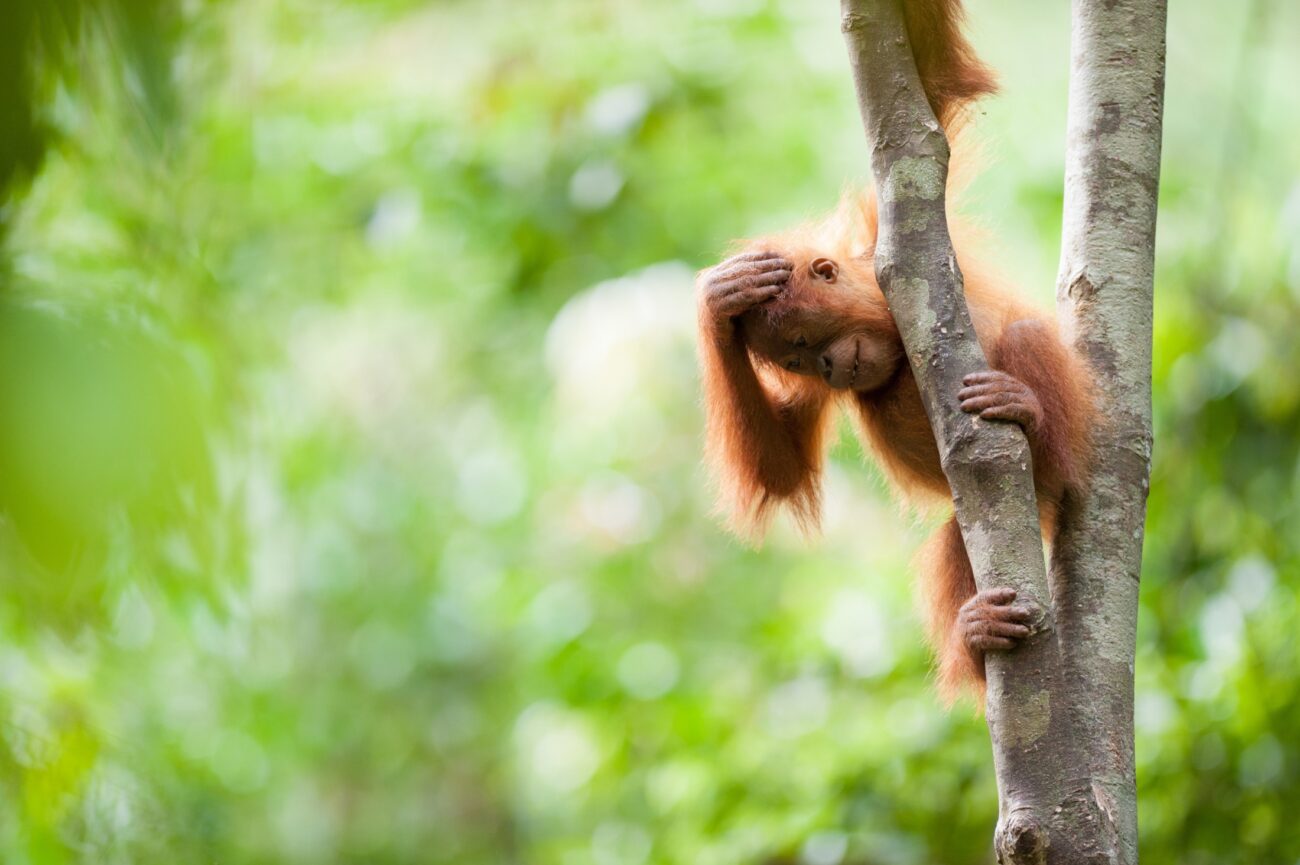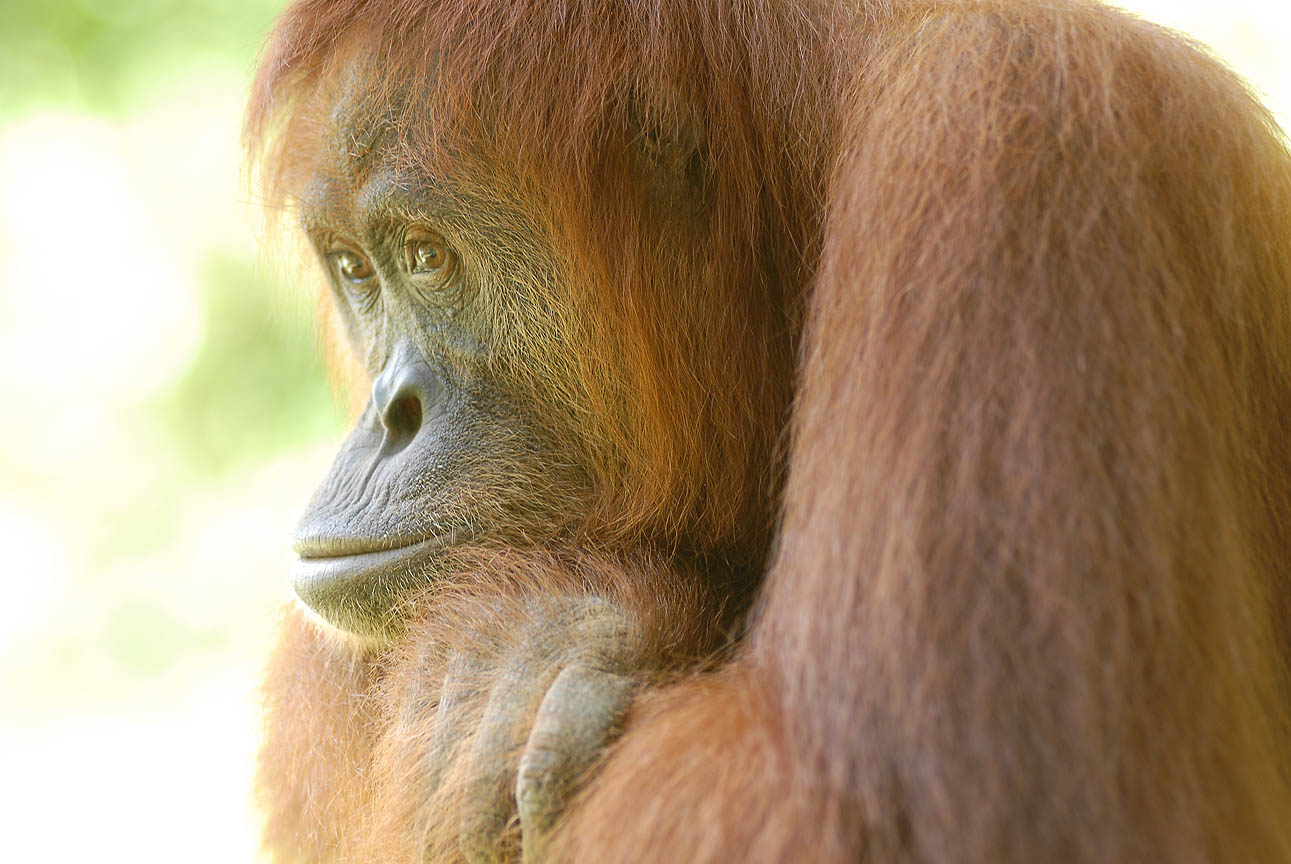
Photo credit: Andrew Walmsley
Have you ever tapped someone on the far shoulder just to watch them look the wrong way? It turns out this playful mischief isn’t uniquely a human trait; it’s present in our primate cousins, too. A 2024 study revealed that great apes, from gorillas to orangutans, love to tease each other.
Researchers observed apes engaging in playful teasing, such as prodding a family member and then running away. They tickled each other, offered objects and then pulled them back, body-slammed and playfully yanked on wisps of hair – a move common among orangutans with their long red locks!
This suggests that playful teasing, which is present in human children as early as eight months old, has deeper roots. The authors of the paper suggest that playful teasing and its cognitive prerequisites may have been present in our last common ancestor, at least 13 million years ago.
But what’s the point of playful teasing? It differs from other forms of play as it’s very much one-sided; initiated by the teaser and not always reciprocated. It involves understanding and then breaking expectations, and predicting how others may react. So, teasing exists to test social boundaries.
Reference: Laumer I. B., Winkler S. L., Rossano F. and Cartmill E. A. 2024 “Spontaneous playful teasing in four great ape species” Proc. R. Soc. B.29120232345
You can help protect Sumatra's Orangutans. Click to get updates
